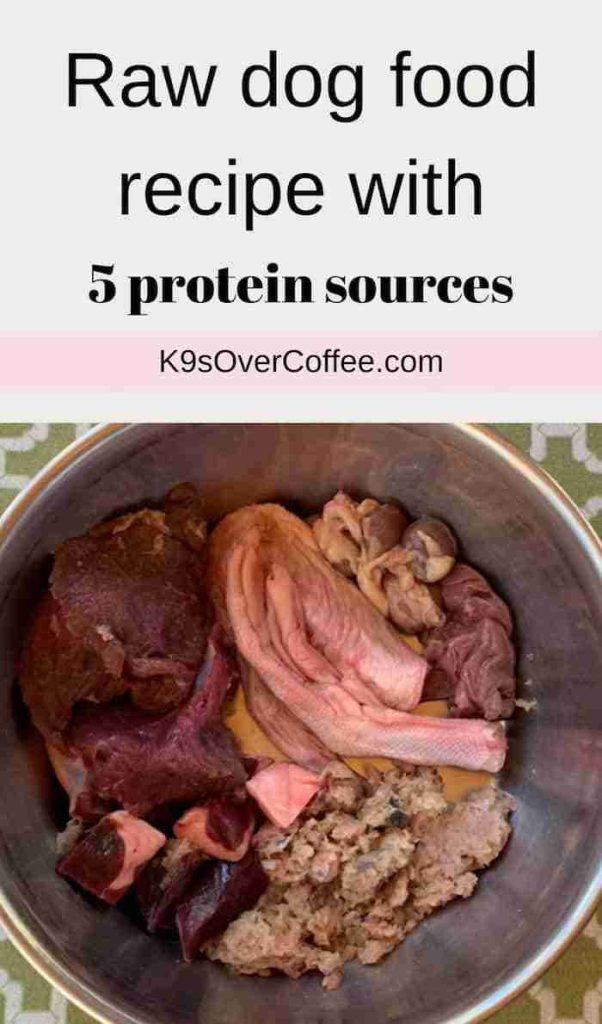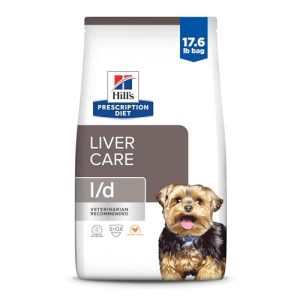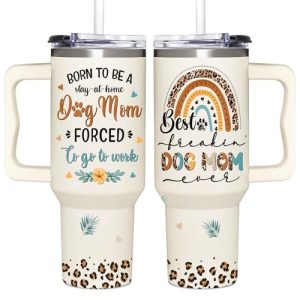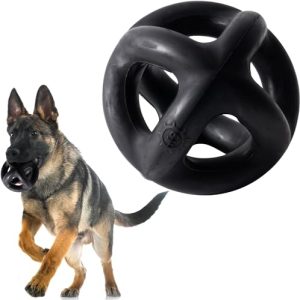Imagine your furry friend brimming with energy, sporting a glossy coat, and enjoying every meal with enthusiasm. That’s the promise many dog owners believe lies within a raw food diet for dogs.
If you’ve ever wondered about the benefits of serving raw meals to your canine companion, you’re not alone. This diet trend is gaining traction, but what exactly does it entail? And more importantly, is it right for your beloved pet?
We will explore the ins and outs of a raw food diet, helping you make informed decisions that could enhance your dog’s health and happiness. Keep reading to uncover the secrets of raw feeding and decide if it’s the key to unlocking your dog’s fullest potential.

Credit: www.foxnews.com
Raw Food Diet Basics
A raw food diet for dogs means feeding them uncooked foods. This diet tries to copy what wild dogs might eat.
Many dog owners choose raw food to give natural nutrients. It can help improve their dog’s health and energy.
What It Includes
A raw food diet mostly includes fresh meats and bones. It may also have fruits, vegetables, and supplements.
This diet avoids cooked foods, grains, and processed ingredients. It focuses on natural, whole foods for dogs.
Types Of Raw Diets
There are several types of raw diets for dogs. Each type has a different mix of meat, bones, and other foods.
- Prey Model Diet: Based on whole prey animals like rabbits or birds.
- Biologically Appropriate Raw Food (BARF): Mix of raw meat, bones, fruits, and vegetables.
- Raw Meat-Based Diet (RMBD): Mostly raw meat and bones, few or no veggies.
Common Ingredients
Raw diets use many common ingredients to meet dogs’ needs. These ingredients provide protein, fat, and nutrients.
- Muscle meat like beef, chicken, or lamb
- Raw meaty bones for calcium and chewing
- Organs such as liver and kidney for vitamins
- Vegetables like carrots and spinach for fiber
- Fruits such as apples or blueberries in small amounts
Health Benefits For Dogs
A raw food diet for dogs includes uncooked meats, vegetables, and supplements. It mimics what dogs would eat in the wild.
This diet can improve your dog’s overall health in many ways. Let’s look at some key benefits.
Improved Digestion
Raw food is easier for dogs to digest because it contains natural enzymes. These enzymes help break down food more efficiently.
Better digestion means less gas and firmer stools. Dogs often have fewer stomach issues on this diet.
Shinier Coat And Healthier Skin
Healthy fats in raw food help improve your dog’s skin and coat. These fats reduce dryness and itching.
- Omega-3 and omega-6 fatty acids nourish the skin
- Vitamins support hair growth and shine
- Less dandruff and irritation
Increased Energy Levels
Dogs often feel more energetic on a raw diet. The nutrients provide steady energy throughout the day.
| Energy Source | Benefit |
|---|---|
| Protein | Builds strong muscles and supports activity |
| Fat | Provides long-lasting energy |
| Vitamins | Helps maintain overall vitality |
Weight Management
A raw food diet can help dogs keep a healthy weight. It has fewer fillers and more protein to support muscle mass.
- Supports lean muscle growth
- Reduces fat buildup
- Improves metabolism
Potential Risks And Considerations
A raw food diet for dogs involves feeding uncooked meat, bones, and vegetables. This diet has gained attention, but it carries some risks. It is important to understand these risks before feeding your dog raw food.
This section highlights the main concerns such as bacterial contamination, nutritional imbalances, food allergies, and veterinary advice. Knowing these can help you make safer choices for your pet.
Bacterial Contamination
Raw meats can contain harmful bacteria like Salmonella and E. coli. These bacteria can make your dog sick and can spread to humans in the house. Handling raw food needs extra care to avoid contamination.
- Wash your hands after handling raw meat.
- Clean all bowls and surfaces thoroughly.
- Store raw food in sealed containers in the fridge.
- Do not feed raw food to dogs with weak immune systems.
Nutritional Imbalances
Raw diets may lack important vitamins and minerals. Some raw diets have too much calcium or not enough nutrients. This can cause health problems if not balanced properly.
| Common Nutrient | Risk if Imbalanced |
|---|---|
| Calcium | Bone damage or weakness |
| Phosphorus | Kidney problems |
| Vitamin A | Vision and skin issues |
| Protein | Kidney strain or poor growth |
Food Allergies
Some dogs may react to raw food ingredients. Allergies can cause itching, swelling, or upset stomach. Watch your dog closely for signs of allergies after starting a raw diet.
- Common allergenic ingredients include beef, chicken, and eggs.
- Introduce new foods slowly and one at a time.
- Consult a vet if your dog shows allergic symptoms.
Veterinary Concerns
Many vets worry about raw diets because of risks like infection and poor nutrition. Regular vet check-ups are important to monitor your dog’s health on a raw diet. They can help adjust the diet if needed.
Talk to your vet before starting a raw food diet. They can recommend safer options and guide you on balancing meals.
How To Start A Raw Food Diet
Starting a raw food diet for your dog takes careful planning. You want to make sure your dog gets all the nutrients it needs.
This guide will help you choose ingredients, switch foods safely, measure portions, and store food properly.
Choosing The Right Ingredients
Pick fresh and safe ingredients for your dog’s raw diet. Use a mix of meat, bones, and organs.
Include vegetables and fruits that are safe for dogs. Avoid toxic foods like onions and grapes.
- Muscle meat such as chicken, beef, or turkey
- Raw meaty bones like chicken wings or necks
- Organ meats like liver and kidney
- Vegetables such as carrots and spinach
- Safe fruits like apples (without seeds) and blueberries
Transitioning Your Dog’s Diet
Switch your dog’s food slowly over two weeks. Start by mixing small amounts of raw food with old food.
Watch your dog for any stomach upset. Increase the raw food portion little by little.
- Day 1-3: 25% raw food, 75% old food
- Day 4-7: 50% raw food, 50% old food
- Day 8-10: 75% raw food, 25% old food
- Day 11-14: 100% raw food
Portion Size Guidelines
Feed your dog about 2-3% of its body weight daily. Adjust amounts based on activity and age.
Divide meals into two or three servings per day. Watch your dog’s weight and health to adjust portions.
| Dog Weight | Daily Food Amount (2%) | Daily Food Amount (3%) |
|---|---|---|
| 10 lbs (4.5 kg) | 0.2 lbs (90 g) | 0.3 lbs (135 g) |
| 30 lbs (13.6 kg) | 0.6 lbs (270 g) | 0.9 lbs (405 g) |
| 50 lbs (22.7 kg) | 1.0 lbs (450 g) | 1.5 lbs (680 g) |
Storage And Handling Tips
Keep raw food frozen or refrigerated until feeding time. Use clean containers and wash hands after handling.
Thaw food in the fridge, not at room temperature. Discard any uneaten food after two hours.
- Store raw food in airtight containers
- Clean bowls and utensils daily
- Keep raw meat separate from other foods
- Wash hands with soap after touching raw food
- Freeze extra portions to keep food fresh
Supplementing The Diet
A raw food diet for dogs includes fresh meats, bones, and organs. It may lack some nutrients dogs need.
Adding supplements helps keep your dog healthy and balanced on this diet.
Essential Vitamins And Minerals
Dogs need vitamins and minerals for strong bones, good skin, and energy. Raw food may miss some of these.
Common missing nutrients include calcium, vitamin D, and zinc. These help keep dogs healthy and active.
- Calcium supports bone and teeth health
- Vitamin D helps calcium absorb properly
- Zinc improves skin and coat condition
Adding Fruits And Vegetables
Fruits and vegetables add fiber, vitamins, and antioxidants to the diet. Dogs need these for digestion and immunity.
Safe options include carrots, blueberries, and spinach. These foods support overall health and vitality.
- Carrots provide vitamin A and fiber
- Blueberries add antioxidants and vitamins
- Spinach offers iron and other minerals
Using Supplements Safely
Use supplements made for dogs to avoid harmful ingredients. Always follow dosage instructions carefully.
Consult your vet before adding new supplements. This helps prevent problems and ensures proper nutrition.
- Choose dog-specific vitamins and minerals
- Do not exceed recommended doses
- Watch for allergies or side effects
- Get professional advice from a vet
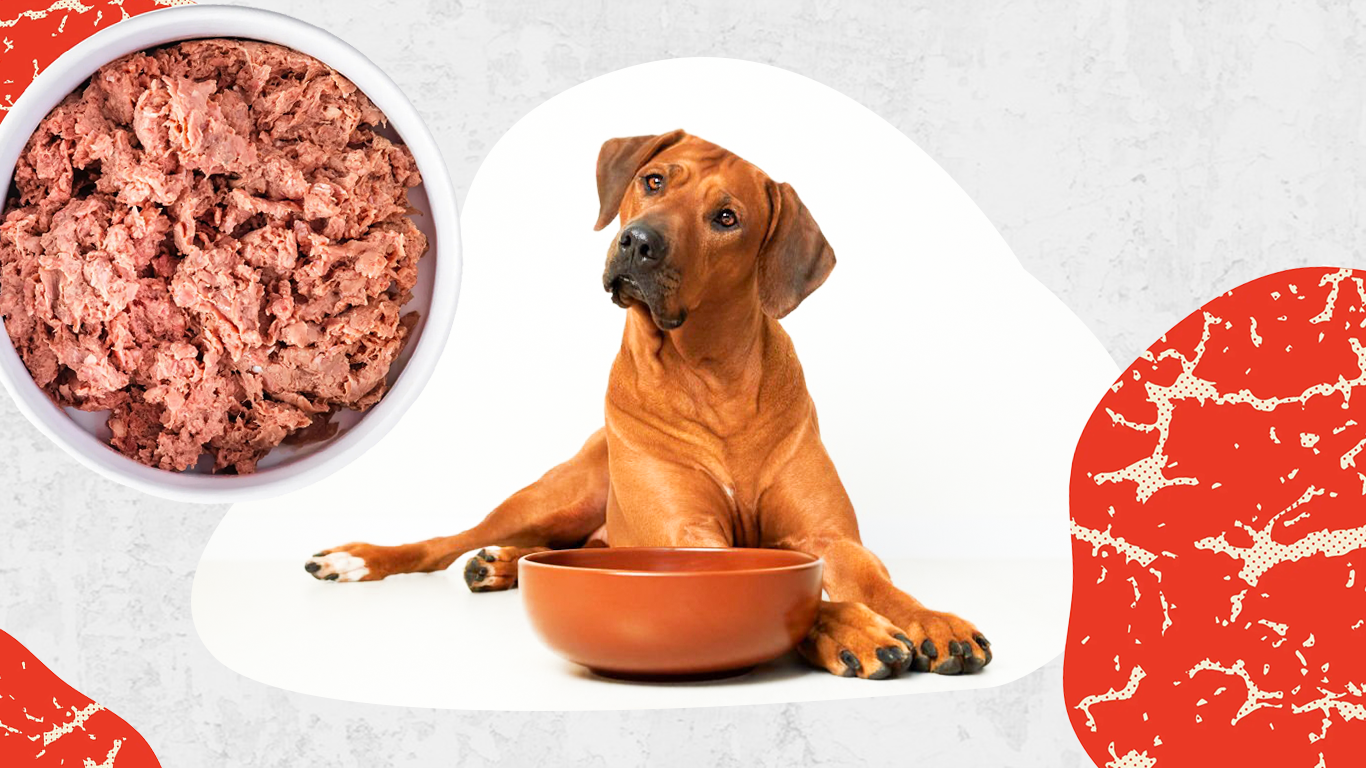
Credit: wefeedraw.com
Common Myths Debunked
Many dog owners hear mixed opinions about raw food diets. Some say they are dangerous. Others think dogs need only cooked food. Some believe raw food costs too much. Let’s clear up these myths.
Understanding the facts helps you decide what is best for your dog’s health. Here we explain common concerns about raw diets.
Raw Diets Are Unsafe
People often worry that raw food has bacteria or parasites that harm dogs. But dogs have strong stomach acid. It helps kill many germs. Studies show most healthy dogs digest raw food safely.
- Use fresh, high-quality meat from trusted sources.
- Keep raw food frozen until feeding time.
- Clean bowls and surfaces after meals to avoid cross-contamination.
Dogs Need Cooked Food
Some say dogs cannot digest raw food well and need cooked meals. Dogs evolved from wolves, who eat raw meat in the wild. Their digestive systems suit raw diets. Cooking can remove some nutrients.
| Food Type | Pros | Cons |
| Raw Food | Rich in enzymes and nutrients | Needs proper handling |
| Cooked Food | Safer from bacteria | May lose vitamins |
Raw Food Is Too Expensive
Raw diets seem pricey at first. But feeding raw can save money on vet bills. Healthy dogs may need fewer treatments for digestion and skin issues. You also control ingredients and avoid fillers.
Ways to reduce raw food costs:
- Buy meat in bulk and freeze portions.
- Include affordable protein like chicken necks or eggs.
- Use local farmers or markets for better prices.
- Balance diet with vegetables and supplements.
Real-life Success Stories
Many dog owners have shared their experiences with a raw food diet. Their stories show how this diet can affect dogs in different ways.
Below are examples of health improvements, changes in behavior, and owner testimonials from people who tried this diet for their dogs.
Improved Health Examples
Dogs on a raw food diet often show signs of better health. These changes can happen in weeks or months.
- Shinier coats and less shedding
- Higher energy levels throughout the day
- Improved digestion with less gas and firmer stools
- Weight stabilization or healthy weight gain/loss
- Reduction in allergies and skin irritations
Behavioral Changes
Some dogs show new behaviors after switching to raw food. These changes often make life easier for owners.
| Behavior | Before Raw Diet | After Raw Diet |
| Energy | Low and tired often | Active and playful |
| Focus | Distracted during training | More attentive and responsive |
| Digestive Issues | Frequent upset stomach | Rare digestive problems |
| Coat Condition | Dull and dry | Glossy and soft |
Owner Testimonials
Owners share how the raw food diet changed their dogs’ lives. Their words help others understand what to expect.
Emma from Texas:“My dog’s allergies cleared up in just a month. She is happier and more active now.”
James from New York:“Switching to raw food fixed my dog’s digestion problems. No more upset stomach.”
Linda from California:“I noticed my dog’s coat became shiny and soft. He has more energy every day.”
Expert Tips For Success
A raw food diet for dogs includes uncooked meat, bones, and vegetables. Many owners choose it to improve their dog’s health.
Starting a raw diet needs care and knowledge. These tips will help you feed your dog safely and effectively.
Consulting Your Vet
Talk to your vet before changing your dog’s diet. They know your dog’s health and needs best.
Your vet can suggest the right foods and amounts. They also check if a raw diet suits your dog.
Monitoring Your Dog’s Health
Watch your dog closely after starting the raw diet. Look for changes in energy, weight, and digestion.
Keep a journal of your dog’s health and behavior. Share this with your vet during checkups.
- Check for loose stools or constipation
- Observe changes in coat and skin condition
- Note any signs of discomfort or allergies
Balancing Nutrients
A raw diet must have the right balance of protein, fat, and vitamins. This keeps your dog healthy.
Include a variety of meats, organs, and vegetables. Calcium from bones is important for strong teeth.
- Muscle meat for protein
- Raw meaty bones for calcium
- Organ meats for vitamins
- Fresh vegetables for fiber
Maintaining Hygiene
Cleanliness is key when feeding raw food. Bacteria can grow if food is not handled properly.
Wash your hands, bowls, and surfaces well. Keep raw food refrigerated or frozen until use.
- Use separate cutting boards for raw meat
- Sanitize feeding areas regularly
- Store raw food at correct temperatures
- Dispose of leftovers quickly
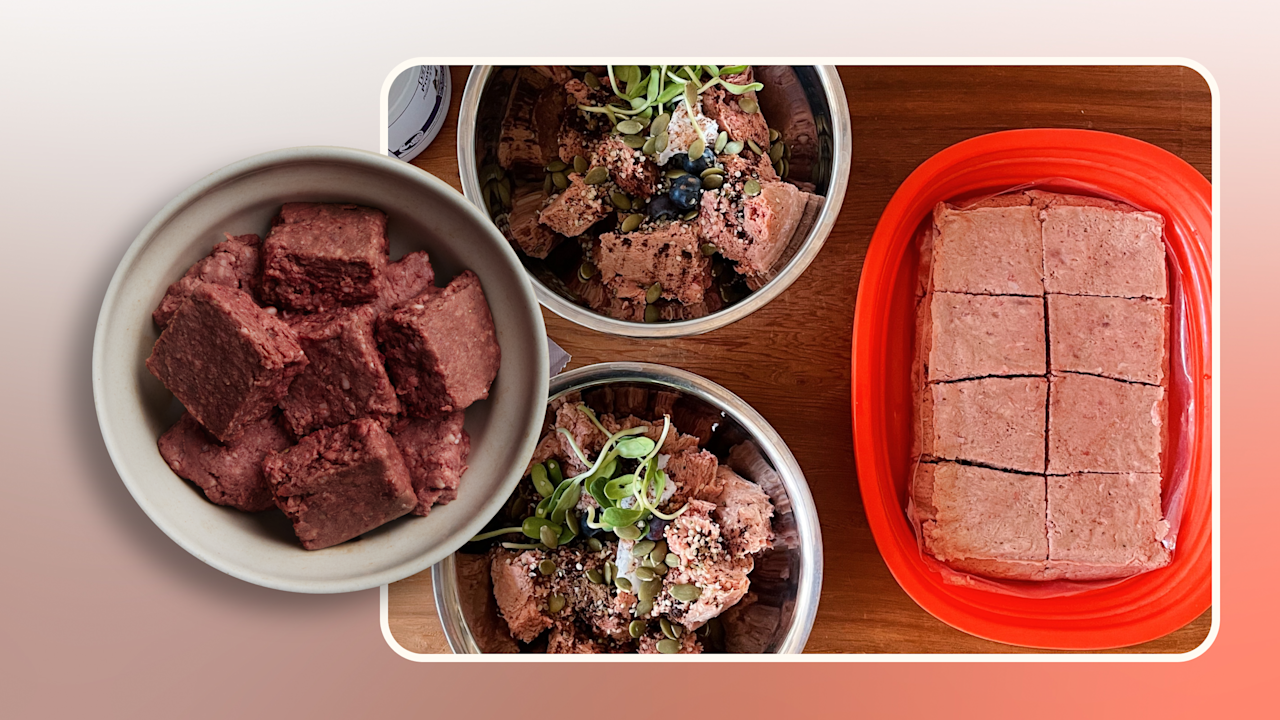
Credit: wefeedraw.com
Frequently Asked Questions
What Is A Raw Food Diet For Dogs?
A raw food diet for dogs includes uncooked meat, bones, fruits, and vegetables. It mimics their natural ancestral diet and aims to improve health and digestion.
Are Raw Food Diets Safe For All Dogs?
Raw food diets can be safe if properly balanced and hygienically prepared. Consult a vet to ensure nutritional needs and safety.
What Are The Benefits Of A Raw Food Diet?
Benefits include better digestion, shinier coat, increased energy, and healthier teeth. It also reduces allergies and supports overall well-being.
How To Start A Raw Food Diet For My Dog?
Begin gradually by mixing raw food with current food. Monitor your dog’s response and consult a vet for a balanced diet plan.
Conclusion
A raw food diet for dogs means feeding them fresh, uncooked ingredients. Many dog owners choose this to give pets natural nutrition. It can support better digestion and shinier coats. Still, it needs careful planning to keep dogs healthy and safe.
Always talk to a vet before changing your dog’s diet. Dogs need balanced meals to stay strong and happy. Raw food is one option, but not the only one. Think about your dog’s needs and lifestyle first. Feeding your dog well shows you care.

Emily Barker is the founder of ChillDogLife.com, a space dedicated to helping pup parents discover the best dog products, lifestyle tips, and cozy ideas for happier homes.
A lifelong dog lover, Emily combines her passion for pets with a knack for research to share trusted recommendations on everything from toys and furniture to health and everyday care.
Her goal is simple: to make life easier, stylish, and more joyful for dogs and the people who love them.
